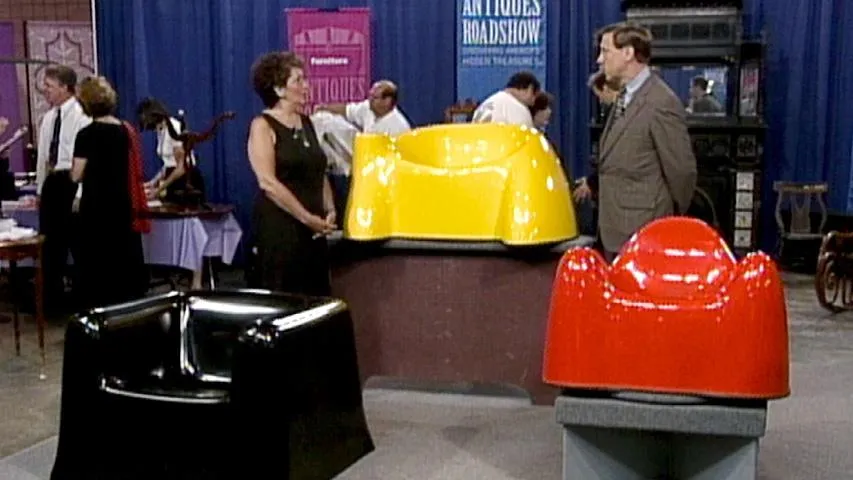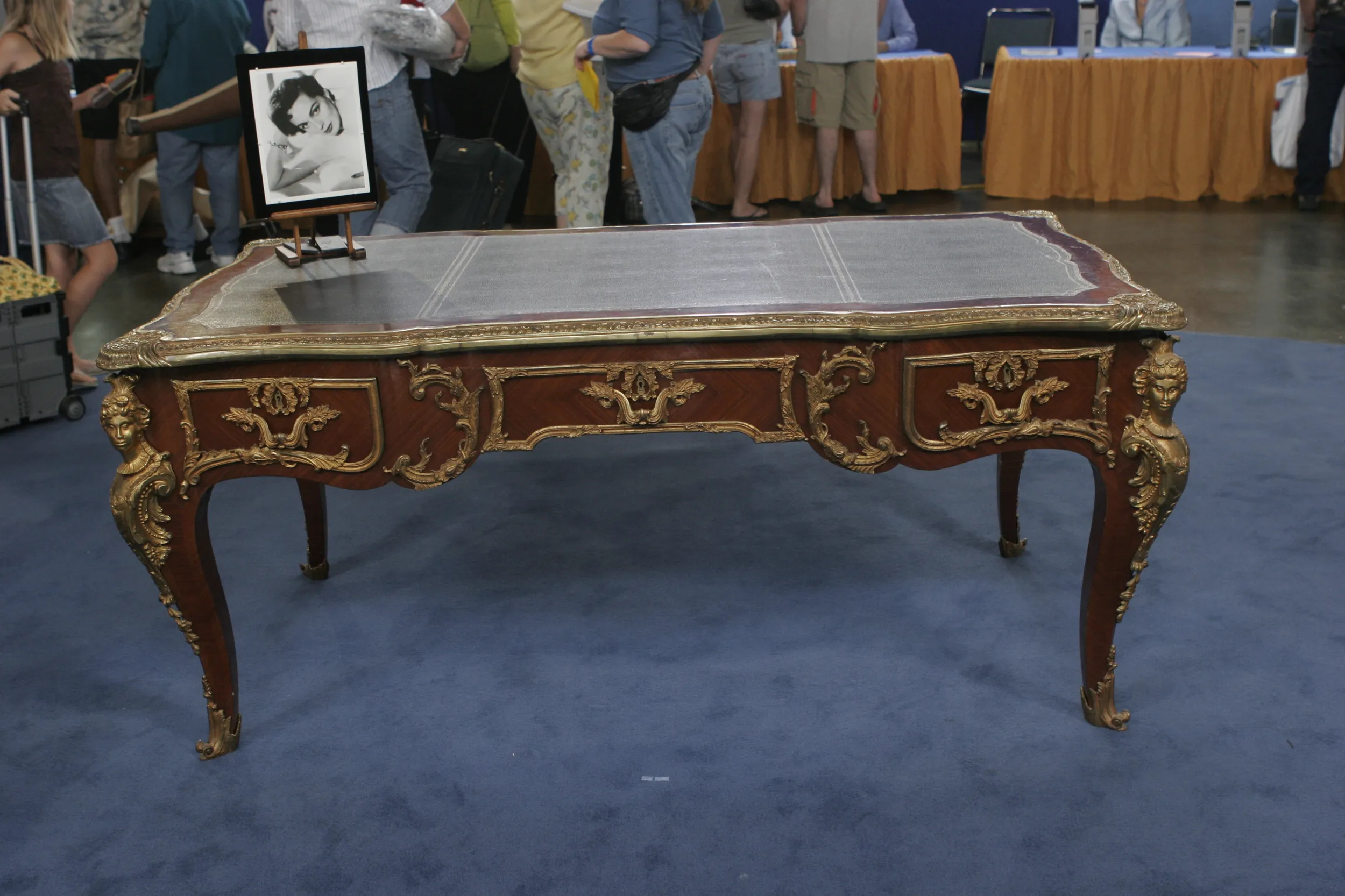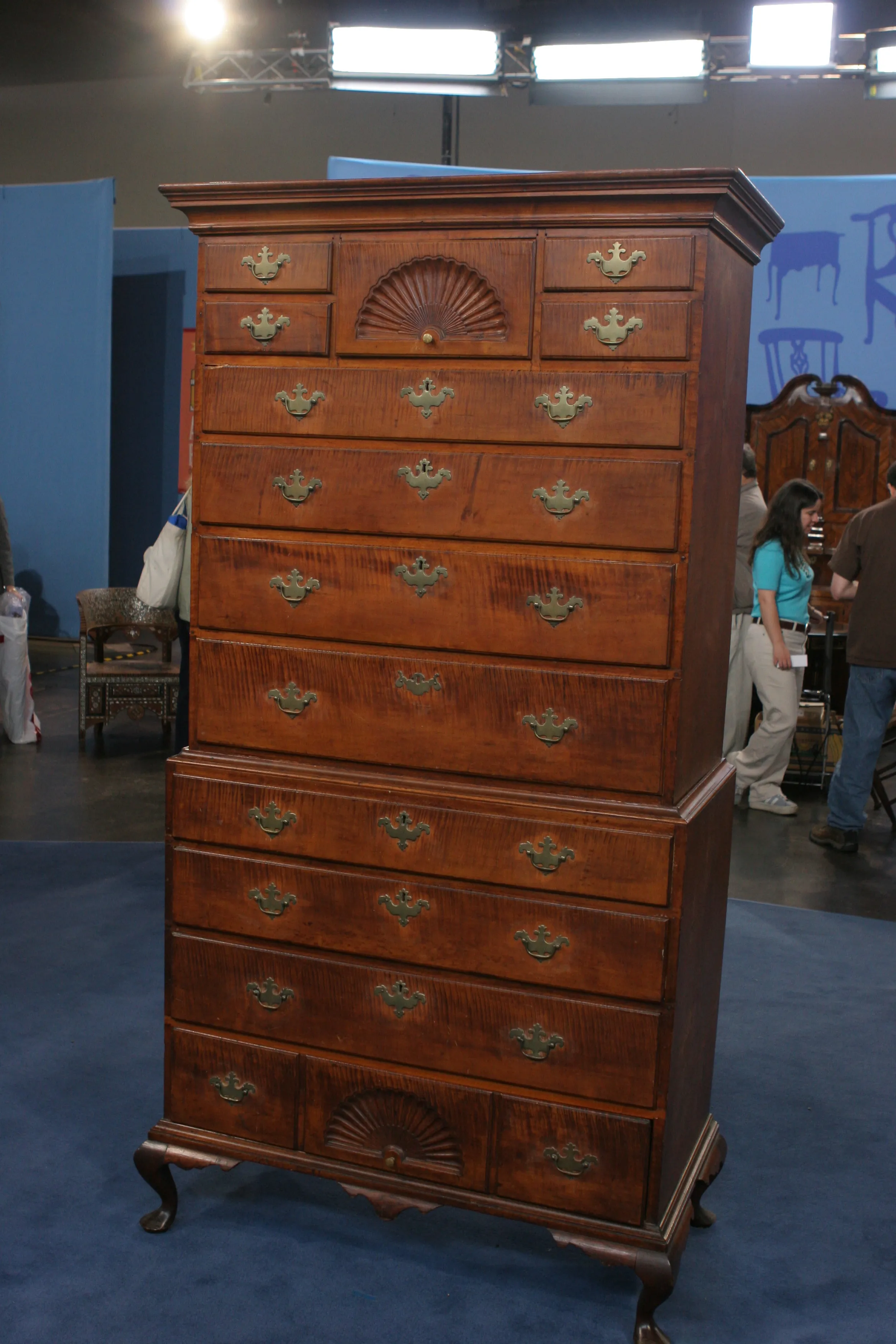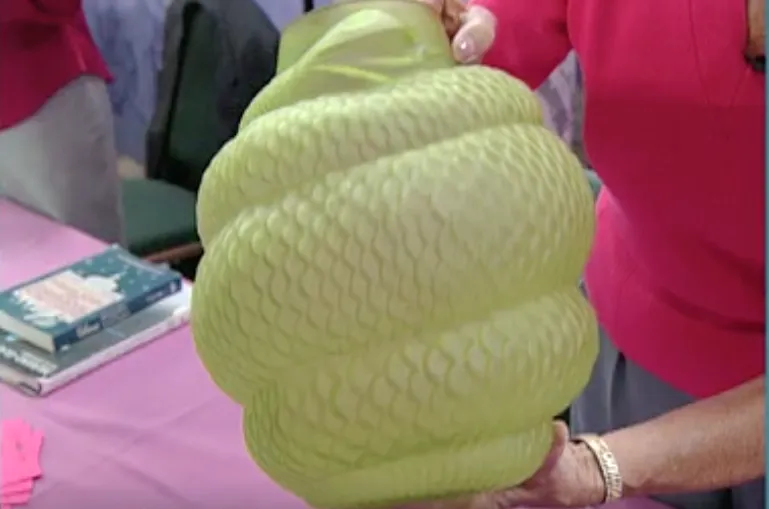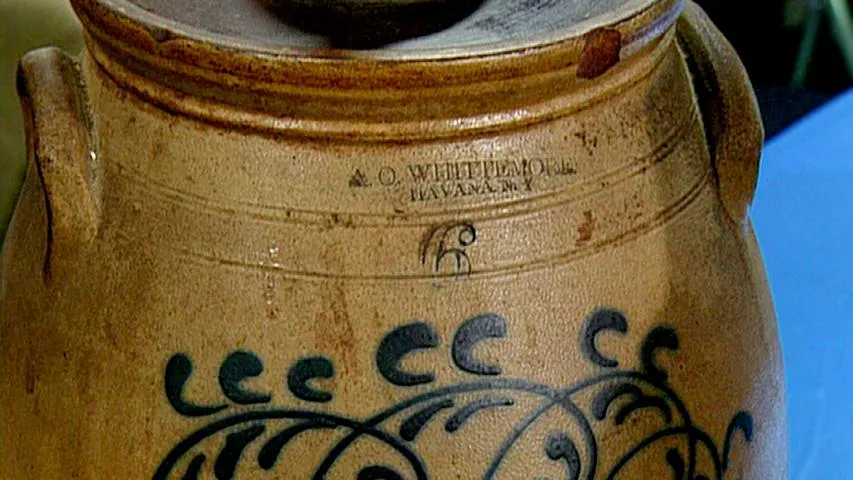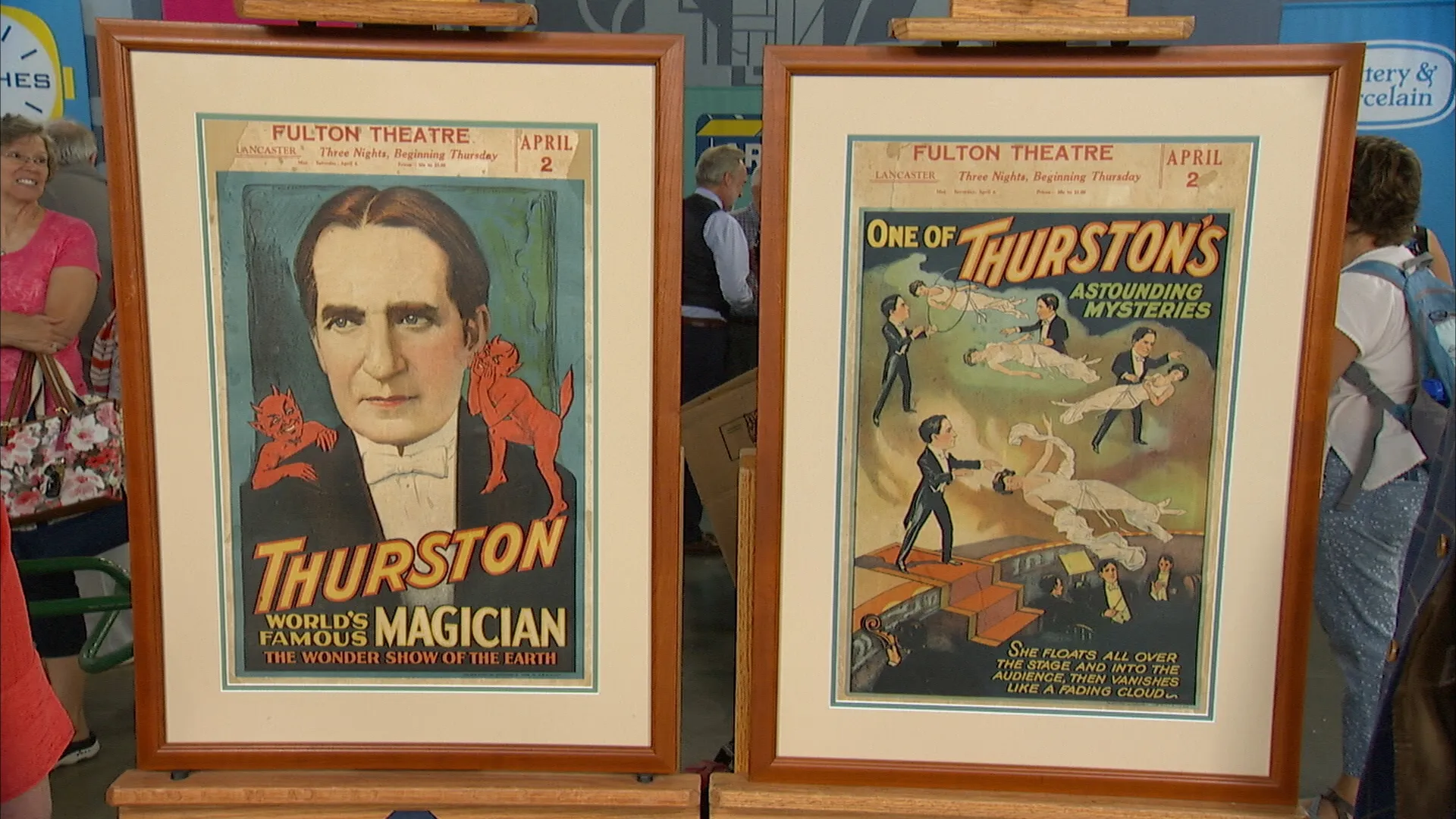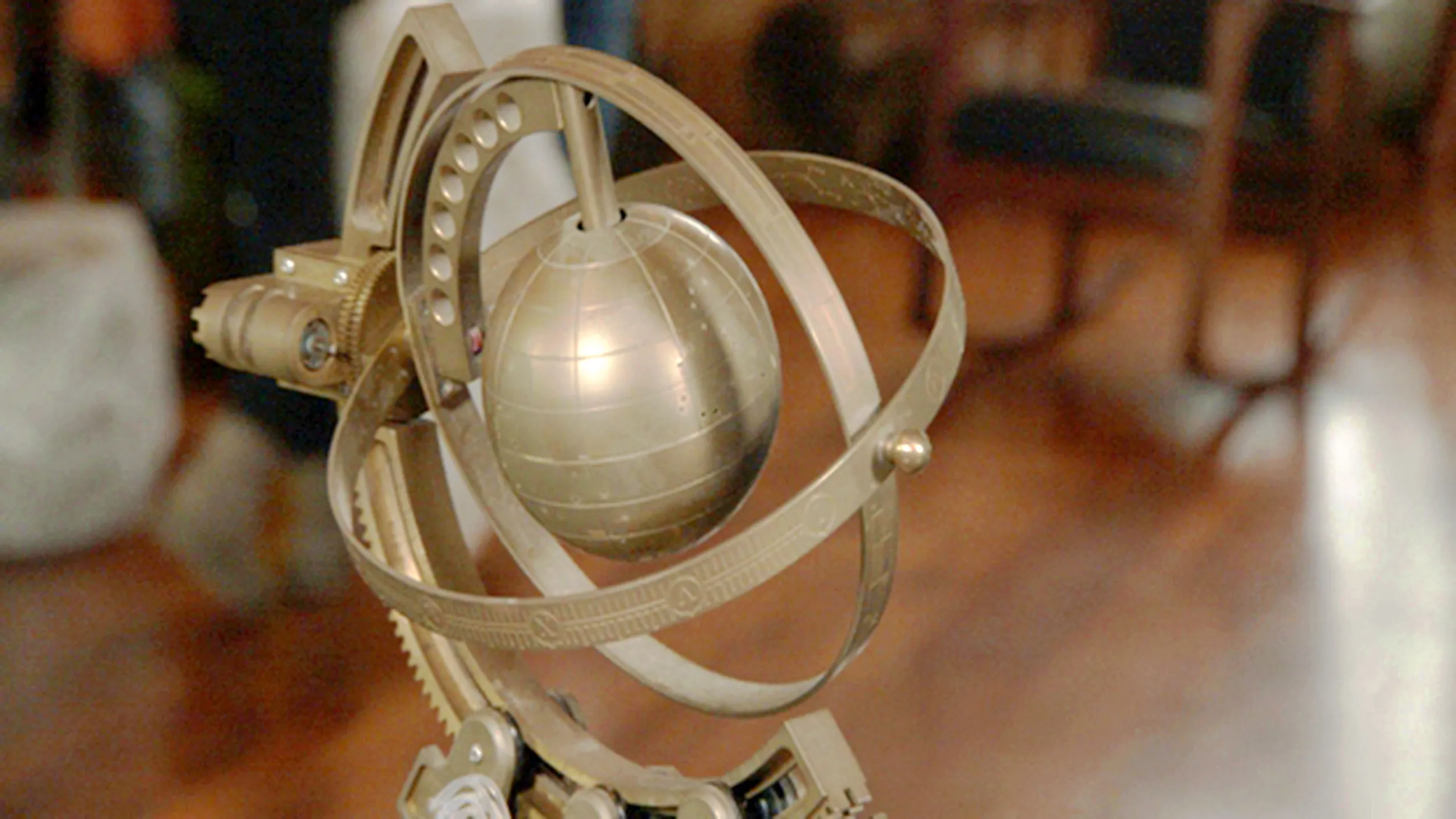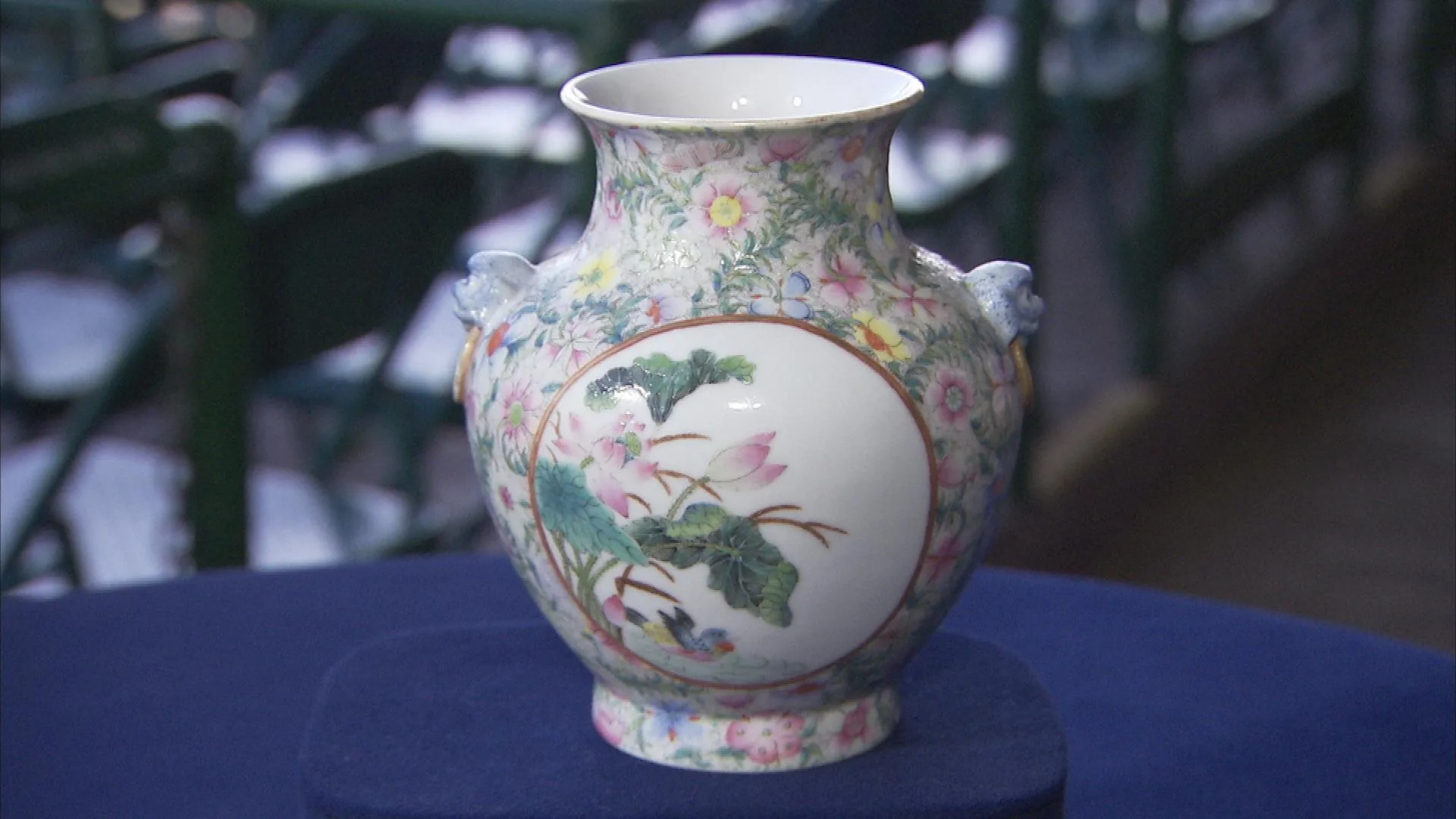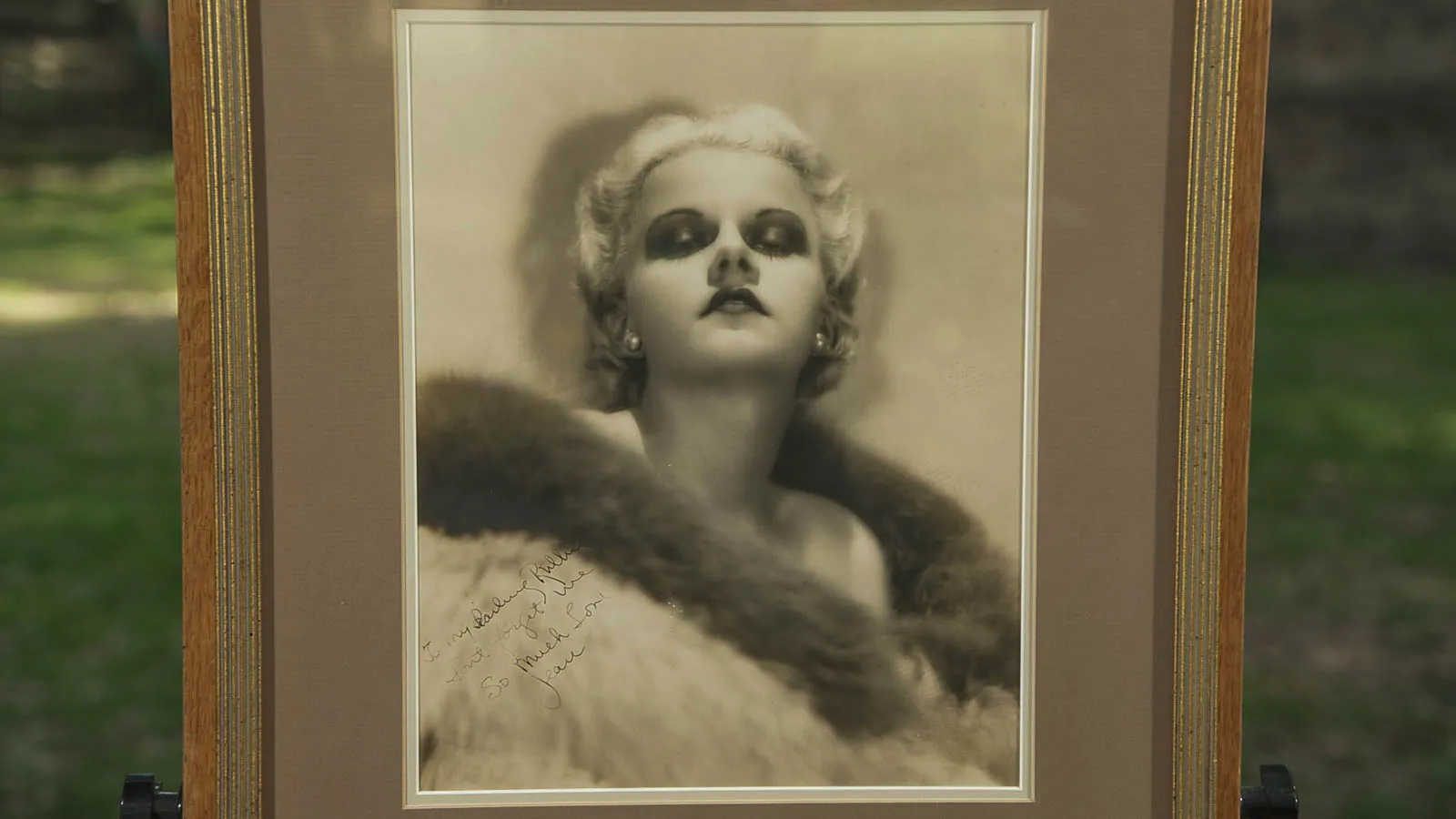GUEST: I was at a country auction sale, and this plain box was going to be auctioned off, and they couldn't open it. It was locked. And, of course, when it came up for auction, the auctioneer made that point, that he thought that there might be something in there of some value, and tried to talk it up to get the price up.
APPRAISER: It was the old locked box routine, yeah?
GUEST: Yes. So anyway, I purchased this plain box for $65...I think it was about $65. And this spoon was in it.
APPRAISER: Well, you've had it 30 years. That's a drop in the bucket to its age, though, because this dates from the end of the 16th century. Silver was incredibly rare and expensive. Now, you know, there are some marks on this spoon there. They are silver marks to show that, in fact, it is silver. And there is a mark that signifies the maker. This is unusual, because it's not made in London. Most of the silver spoons during the Elizabethan period were made in big centers like London, Norwich. This was actually made in Exeter, a West Country seaport, an important trade center in those days, and it has the Exeter mark here, which is actually an "X" with a crown over it. This bowl here has often been worn away. Generations of families doing this means that the bowls often become very thin. The condition of this is quite good, and for a spoon collector, that would be all important. In terms of price, English provincial spoons like this are very rare. The fact that it's Exeter also means that it's probably worth three or four times what the same spoon made in London would be worth. So I'd say we're probably talking about maybe $2,000, $2,500.
GUEST: Well, that's nice to hear.
APPRAISER: So your $65 was well spent.

